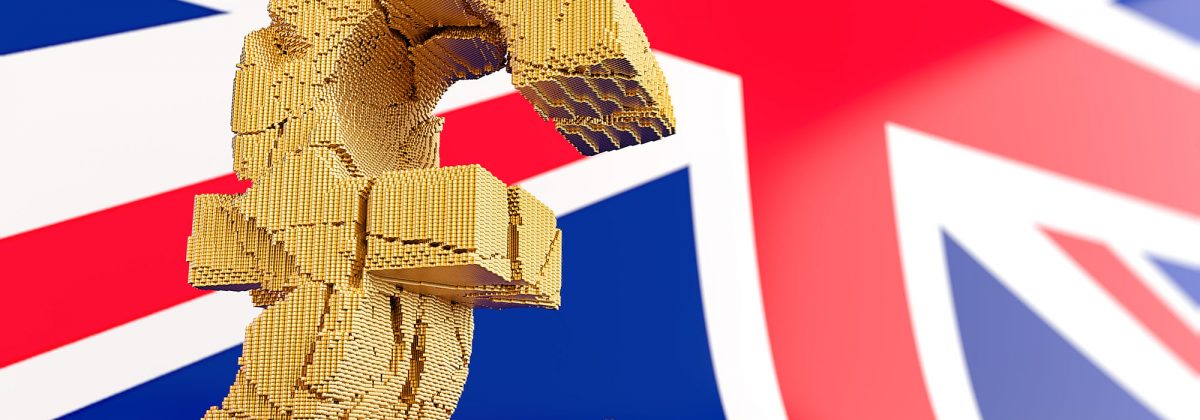Brexit is turning out to be a highly expensive affair for the UK. Bloomberg Economics says that it has already cost the nation £130 billion to severe ties with the EU, while a further £70 billion is likely to be spent by the end of 2020. At this rate, Brexit alone will cost the UK more than its total payments to the EU budget in the last 47 years!
This yearly cost estimate is the highest since the referendum in 2016. Over the last 3.5 years, Brexit uncertainty has cost the UK economy much more than that. It has dampened business sentiment, weakened job creation and put thousands of lives on hold. Millions of EU citizens in the UK and vice versa are unsure about what the future holds for them.
The UK economy is in a critical position right now. As talks between the UK and EU progress towards the impending deadline of January 31, 2020, the Pound Sterling is expected to see increasing volatility. How will it fare in this climate? Let’s find out.
Pound Performance after UK Elections
The UK’s general election on December 12, 2019, and the subsequent Conservative majority brought new certainty to the Brexit proceedings. The Pound jumped to its best since March 2018, trading at $1.30 against the US Dollar on the day of the election. On the election night, it was trading just above $1.35.
After the exit polls showed a clear Conservative win, the GBP gained almost 250 points in the next trading session. Volatility was expected to continue till January 2020.
Pound Sterling in 2020, So Far
The British Pound entered 2020 on a positive note. It maintained a strong footing in the first business week. Better-than-expected economic data suggested that the UK economy could see some revival in Q1 2020. The Service PMI, which is an indicator of activity in the UK’s prominent services sector, beat market expectations at 50. Future business expectations received a boost from the Conservative majority in parliament. On January 6, 2020, the GBP was trading at 1.3162 against the USD and at €1.1756 against the EUR.
This rally was, however, short-lived, as the Bank of England hinted at an interest rate cut. Dovish comments from Monetary Policy Committee (MPC) member Gertjan Vlieghe led to the Pound trading below $1.30 on January 13, 2020. The Bank of England has not resorted to rate cuts since 2016, one of the only central banks to keep interest rates steady in 2019.
Keep in mind that a string of key data releases is scheduled in the next few weeks, like the Consumer Price Index (CPI), retail sales and Purchasing Managers’ Index (PMI). If these indicators suggest a slowing economy, it could trigger a rate cut by the BoE. The inflation rate will be particularly important for the bank. Consensus expectations of the inflation rate stand at 1.5%. Any deviation from this could lead to a change in the monetary policy.
What Lies Ahead till January 31, 2020?
Boris Johnson and Ursula von der Leyen, the new President of the European Commission, held a round of talks on January 14, 2020. Ms. Von der Leyen started on a positive note, stating that the EU would be keen to agree on a full trade agreement. Yet, with the comprehensive terms that Johnson has put forward for the deal, she has expressed concerns on how little time is available to fulfil them.
Prime Minister Johnson wants a swift Canada-style free trade agreement and has maintained that he won’t extend the date of the final exit from the EU. He has set a hard-line date of December 2020, to decide on transition terms. That could pose some problems.
In the currency markets, both the GBP and the EUR showed little reaction to the talks. This suggests that the market is maintaining a positive undertone, expecting the talks to yield a swifter Brexit. News of the Brexit bill clearing the House of Commons also helped spark positive sentiment. Now, the bill will be discussed in the House of Lords, where it is expected to be passed with little resistance.
It is the key economic data releases that investors are looking forward to. Volatility in the Pound Sterling is expected. Both the GBP/EUR and GBP/USD could suffer.
Future Outlook for the Pound Sterling
The UK is keen to separate itself from the EU’s rules and standards. But, if it wants to enjoy zero tariffs and zero quota structure, it will have to agree to abide by the EU labour, environmental, social and state aid rules, which the UK PM has already rejected.
Under no circumstances does the UK government want to extend the Brexit date. This means that a concrete deal might be negotiated by the EU commission by the end of February 2020. Between March to September 2020, a final agreement might be struck. But, that is the best case scenario. The risk of tariffs on some British goods in the EU still persists.
The UK might just score a “skinny” deal with the EU, based on some goods and services sectors. It might broadly still be aligned to EU rules for some time. Moreover, the UK government will now need to focus on striking trade deals with other nations too, such as Canada, the US, Australia and Japan. The Australian government has already said no to a visa-free travel deal with the UK.
Overall, the Pound Sterling is expected to remain weak, owing to weak economic fundamentals. Brexit on January 31, 2020 is not the end of it all. Rather, the uncertainty around future relationships between the UK and with other countries could weigh on the currency. Economists predict that the Pound could trade somewhere around $1.31-$1.38 against the US Dollar by the end of 2020. This will be supported by a weakening USD at the end of the year. Against the Euro, the GBP might reach a figure of €1.30, before the year end.
Reference Links
Start Trading in 3 easy steps
1
Complete the Application Form
It takes just minutes for us to verify your identity and set up your account.
2
Download MT4 Platform
Download MT5 and trade via your desktop, mobile or tablet. No minimum deposit required.
3
Start Trading
Trade more than 60 products (Forex, CFDs & Commodities)





